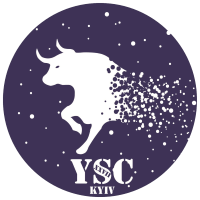Speaker
Description
Abstract: Enter abstract text below. The extent of the abstract should be limited to 37 lines. Any mathematical expressions or special characters write with LaTeX coding. *
We use different machine learning techniques to create and compare classifiers for the search of compact star-forming galaxies (CSFGs). The methods considered were: k-nearest neighbours, deep neural network, and gradient boosting. All models were optimized on a dataset compiled from two subsamples. A subset of $ \sim 43,000 $ CSFGs was carefully selected from the SDSS Data Release 16 and extended with $ \sim 3,700,000 $ objects also from SDSS DR 16, which were already automatically classified based on spectra available. As the input variables for a model, we use six parameters, according to six photometric magnitudes of SDSS \textit{ubgriz} bands. Each model outputs a probability of an object being a CSFG.
After hyperparameters tuning and optimizing the precision-recall tradeoff, we found that gradient boosting is the most effective classifier with $ \sim 84 \% $ precision and $ \sim 84 \% $ recall. Therefore, we expect that the developed classifier could provide a reliable instrument for CSFG selection based on photometric data.

